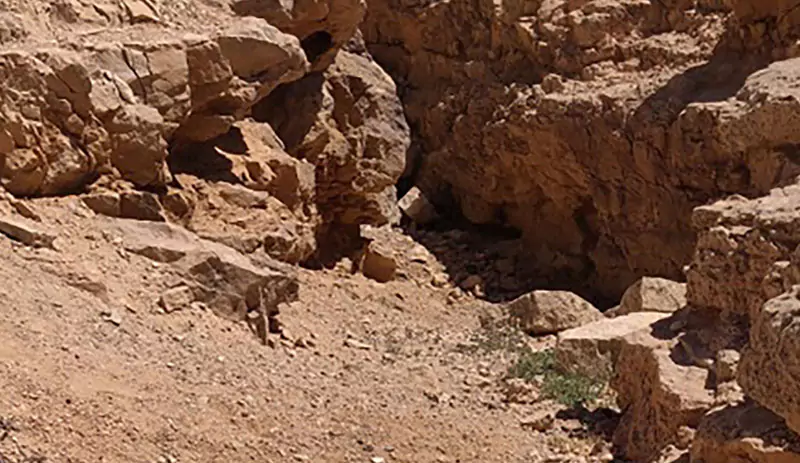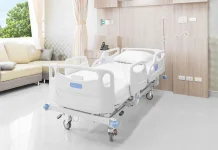Maya Jaffe
biomedical engineering student, Georgia Institute of Technology
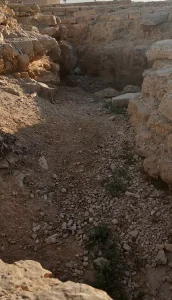
Visualize a hiker walking all day in a 100 m deep canyon beneath a cloudless sky. All morning, the floor of the canyon is shady but there is visible light reflected off the canyon walls (Figure 1a). For a while around noon, the floor of the canyon is brightly bathed in direct sunshine (Figure 1b). As the afternoon progresses, the sun drops behind the canyon ridge, and the hiker is again in the shade.
Now imagine that the Earth stops rotating at 9 a.m.. The sun will never be directly above the canyon; as such, the floor of the canyon and most of the canyon walls will never be exposed directly to sunshine (Figure 1a). Further, imagine that the walls absorb all the light with no reflection. The canyon floor will be darker than the darkest night.
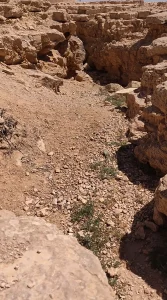
Next, picture a slightly textured surface with a small trough/peak difference of 0.1 mm (10-4m), akin to a human fingerprint. From the perspective of a 1.0-micron (10-6m) diameter Staphylococcus aureus, that slightly textured surface is just like the hiker in that 100 m deep canyon.
Most viruses are an order of magnitude smaller than bacteria, implying that they reside in a 1,000 m deep canyon. The phenomenon that textured surfaces shadow bacteria/viruses when light is not shone directly above the surface is called the “canyon wall effect.”
Healthcare surfaces such as a floor, a chair, a sitting stool, a formica countertop, an over-bed table and a stainless-steel mayo stand are all textured. Few are mirror-smooth. Thus, it is important to understand the canyon wall effect in the context of how UV lamp orientation on textured surfaces affects the kill rate of contaminants. Furthermore, most of these surfaces are oriented horizontally and airborne bacteria are more likely to land on a horizontal rather than a vertical surface.
UV disinfection in the hospital environment
Contaminated surfaces in a hospital room play a significant role in increasing the risk of infection for the patient and the healthcare worker who disinfects the room. Traditional mechanisms of cleaning, such as liquid disinfectants, are inadequate and often will miss large numbers of contaminants that could cause hospital-acquired infections (HAIs).
According to the CDC, in 2015, there were 687,000 HAIs in US hospitals, and 72,000 patients that had an HAI died while hospitalized. In patient rooms with inadequate cleaning, the risk for HAIs from pathogens such as Clostridium difficile (C. diff) and Staphylococcus aureus (MRSA) is greatly increased.
These pathogens can survive on surfaces for a long period of time and often are contracted by healthcare workers while disinfecting. Therefore, there is a need for more effective and no-touch systems of disinfection to reduce the spread of HAIs to patients as well as healthcare workers. This is the appeal of UV disinfection systems.
Shadowing is a recognized limitation of UV disinfection and is often solely thought of at the macroscopic level with objects in the way and the need to reposition the emitter to reach both sides of a target object. Additionally, surfaces may be horizontal, vertical or anywhere in between. Many objects, such as an anesthesia machine, have multiple surfaces at various orientations. Shadowing also occurs on a microscopic level, as shown through the canyon wall effect.
Currently, the vast majority of UV-C emitters in use are stationary and vertical in orientation, much like the sun stuck at 9 a.m. Unlike visible light, UV-C reflects very poorly off most surfaces, leaving the bacteria to be effectively shielded and protected like a soldier in a trench.
Is the ‘canyon wall effect’ real or purely theoretical?
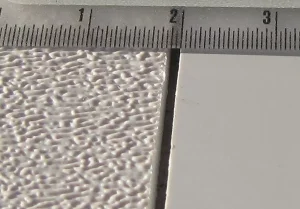
The canyon wall effect was explored in a series of three experiments described briefly here, positioning the UV lamp at varying orientations to disinfect textured and smooth tiles. A solution of live Staphylococcus aureus was prepared, and 10 x 10 cm plastic tiles were inoculated with identical aliquots of the solution. As shown in Figure 2, a group of tiles was mirror-smooth and another group was textured.
Experiment No. 1 exposed inoculated smooth and textured tiles to identical UV-C doses with stationary lamps parallel to and above the tiles. The tiles then were cultured and no difference in kill rates on smooth vs. textured surfaces was found. This is analogous to the hiker with the sun stuck at high noon.
Experiment No. 2 exposed inoculated smooth and textured tiles to the same UV-C dose and distance as experiment No. 1, but positioned the stationary lamps in a vertical orientation, perpendicular to the horizontal tiles. The tiles were cultured, and it was found that for smooth surfaces, the kill rate was >150 times greater with the lamps parallel and above than with the lamps vertical and to the side.
For a textured surface, the kill rate was >500 times greater with the lamps parallel and above than with the lamps vertical and to the side. This is analogous to the hiker with the sun stuck at 9 a.m.
Experiment No. 3 exposed one group of textured tiles with stationary lamps above and parallel to the tiles and a second group of textured tiles but moved the lamps across the tiles with exactly the same UV-C dose. The tiles were cultured, and it was found that motion between the UV-C source and target increased the kill rate about 2.5 times.
Summary of the investigations
As a result of the experiments, it was deduced that the “canyon wall effect” is real. A UV-C source oriented parallel to and passing parallel to a textured target surface is at least 1,250 times more effective than a stationary UV-C source perpendicular to the target surface at the identical UV-C dose.
Analysis
The “canyon wall effect” is the submillimeter combination of shadowing and of varying angles of incidence as the UV-C light strikes a textured surface. Without dissecting the dual particle and wave nature of light, suffice it to say that photons may be thought of as much smaller than bacteria and analogies of a hiker in a canyon are reasonable and instructive approximations. The orientation of the UV light makes a very significant difference in the kill rates of contaminants on surfaces in hospital rooms.
Practical implications of the ‘canyon wall effect’
Understanding the “canyon wall effect” has real-world implications on the design and implementation of optimized UV disinfection devices. Like the sun traversing over a canyon, UV-C sources oriented parallel and moving parallel to the target surface can improve kill rates by a factor of more than 1,000.
This article was completed under the direction of Arthur Kreitenberg, Ph.D., co-founder and chief technology officer of Germ Falcon. Kreitenberg can be contacted at dr.k@germfalcon.com.
Contact: Maya Jaffe, mjaffe8@gatech.edu


